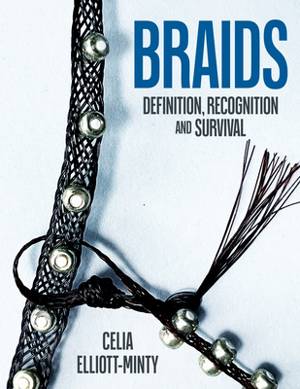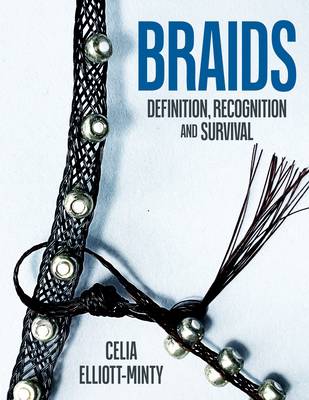
- Afhalen na 1 uur in een winkel met voorraad
- Gratis thuislevering in België vanaf € 30
- Ruim aanbod met 7 miljoen producten
- Afhalen na 1 uur in een winkel met voorraad
- Gratis thuislevering in België vanaf € 30
- Ruim aanbod met 7 miljoen producten
Zoeken
Braids: Definition, Recognition and Survival
A Practical Approach for Archaeologists Towards Understanding Braided Structures
Celia Elliott-Minty
€ 95,45
+ 190 punten
Omschrijving
The work on which this book is based arose from the author's interest in braided textiles and their apparent scarcity in archaeological records. The need for guidance aimed at archaeologists and others to assist them in visually identifying braids correctly was evident. Equally important was to gather details from publications on found braids to act as a baseline dataset. Textiles survive poorly in archaeological settings, and this is especially true for small items such as braids, which are seldom found and therefore poorly understood. The research on which the book is based defines and analyses these underrated textiles in a systematic way and provides other researchers with guidelines to follow. It first establishes what is a braid, which is a more contentious issue than might be thought. A range of braided structures are then explored and explained through use of clear diagrams and consistent nomenclature. Techniques for making braids are considered with the understanding that there is always uncertainty. A practical report form is devised accompanied by decision trees. A glossary section provides definitions of relevant textile terminology.
The book provides, for the first time, a reliable dataset based on published reports covering the Bronze Age to medieval period in northern and central Europe, including the United Kingdom. Detailed case studies are presented for several previously undescribed braids: the analytical methods and explanatory descriptions developed in previous chapters are applied to each artefact, and the findings carefully documented. These studies both test the proposed report form and decision trees proved and demonstrate their applicability in practice, discussing examples from both the published literature and those previously unexamined.
The book is aimed primarily at archaeologists who need an authoritative reference work to help them better understand any braided finds that they encounter. It will also be of general interest within the textile archaeology community and to braiders curious about braids created in the past and how they were used.
The book provides, for the first time, a reliable dataset based on published reports covering the Bronze Age to medieval period in northern and central Europe, including the United Kingdom. Detailed case studies are presented for several previously undescribed braids: the analytical methods and explanatory descriptions developed in previous chapters are applied to each artefact, and the findings carefully documented. These studies both test the proposed report form and decision trees proved and demonstrate their applicability in practice, discussing examples from both the published literature and those previously unexamined.
The book is aimed primarily at archaeologists who need an authoritative reference work to help them better understand any braided finds that they encounter. It will also be of general interest within the textile archaeology community and to braiders curious about braids created in the past and how they were used.
Specificaties
Betrokkenen
- Auteur(s):
- Uitgeverij:
Inhoud
- Aantal bladzijden:
- 160
- Taal:
- Engels
- Reeks:
Eigenschappen
- Productcode (EAN):
- 9798888572375
- Verschijningsdatum:
- 31/08/2026
- Uitvoering:
- Paperback
- Formaat:
- Trade paperback (VS)
- Afmetingen:
- 170 mm x 239 mm

Alleen bij Standaard Boekhandel
+ 190 punten op je klantenkaart van Standaard Boekhandel
Beoordelingen
We publiceren alleen reviews die voldoen aan de voorwaarden voor reviews. Bekijk onze voorwaarden voor reviews.











